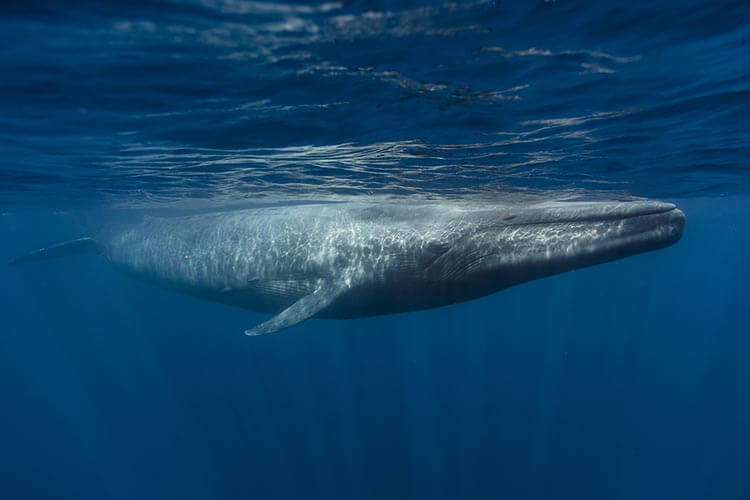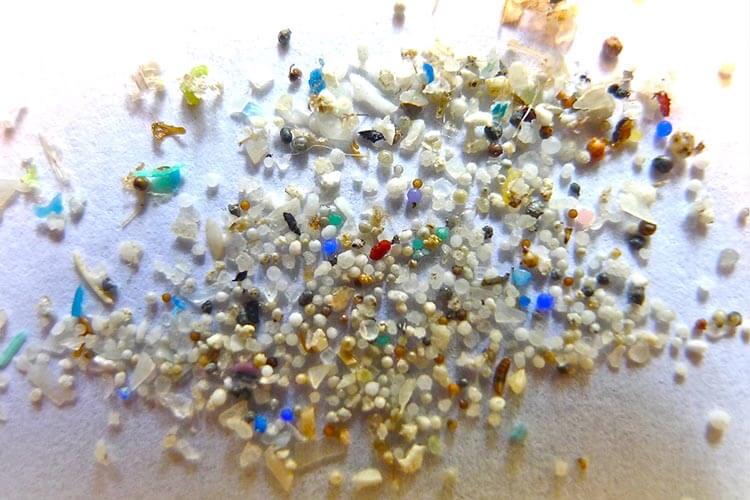
Blue whales could be ingesting as much as 10 million pieces of microplastic every day, according to a study published in the online journal Nature Communications.
Microplastics (plastic pieces between 0.001 to 5mm in diameter) have been recorded throughout the world’s oceans, from the surface to the deep sea floor. They have been found in the bodies of many different species, and have even found their way into the human bloodstream, mostly through the consumption of edible fish and shellfish.
A team led by scientists from the Hopkins Marine Station based at Stanford University, California, deployed 191 tags on blue, fin, and humpback whales inhabiting the waters off the Californian coast.
The whales’ movement was monitored through the California Current Ecosystem, where previous studies have determined a known concentration of microplastics across a range of depths.
More articles about blue whales and plastic pollution

The scientists found that the whales fed predominantly between depths of 50 to 250 metres, which coincides with the highest measured concentrations of microplastics in the water. The tags also allowed the scientists to measure ‘lunge events’, the process by which filter-feeding whales force huge volumes of water into their mouths, before draining it through the baleen plates that line their upper jaws, filtering krill and small fish from the water.
While the water itself contains a concentration of microplastics, a paper published in April 2022 found that the bulk of marine microplastics consumed by the whales is through ‘trophic transfer’ – in other words, the plastic particles are already embedded in the prey that they eat, rather than filtered directly from the water column.
From a total of 36,487 lunge-feeding events, the scientists were able to calculate the volume of water that each whale would bring into their mouths. Computer modelling was used to estimate the amount of krill or fish – and hence the number of plastic particles – that the whales would consume with each lunge.
The models found that blue whales – the largest living creature ever known to have existed – are also the largest consumers of microplastics, ingesting up to 10 million particles, weighing an estimated total of anywhere between 2.51 to 43.6 kg, per day.

Over a sustained feeding season, this may equate to as many as 1 billion plastic particles, and while much of that would be egested as fecal matter, there is mounting evidence that the smallest particles – including those broken down by digestive processes – can pass through the intestinal wall and become embedded in body tissues.
Blue whales are ‘krill-obligate’ feeders, in that their diet consists only of the tiny zooplankton, meaning they feed more frequently and consume greater quantities of prey. Humpback whales eat small fish such as anchovy and herring, which the scientists predicted meant they were likely to consume less microplastic overall – but still a massive 200,000 particles per day.
Although little is known about the toxic effects of microplastic buildup in body tissues, the study suggests that filter-feeding megafauna ‘may be at risk via the cumulative physiological and toxicological burdens from this debris’.
The sheer volume of plastic present in both prey and predator also means that energy expended on feeding may bring less reward to the megafauna, as the plastic in the whale’s digestive system is preventing the animal from absorbing the energy from its food source.
‘Imagine carrying around an extra 45 kilograms,’ said lead researcher Shirel Kahane-Rapport. ‘Yes, you’re a very big whale, but that will take up space.
‘We need more research to understand whether krill that consume microplastics grow less oil-rich, and whether fish become less meaty and less fatty,’ she added, ‘all due to having eaten microplastics.’
Furthermore, the scientists point out that the study’s waters are far less polluted than other environments, such as the Gulf of Mexico and parts of the Mediterranean Sea, demonstrating the urgent need to eliminate plastic from global water systems as swiftly as possible.
The complete study ‘Field measurements reveal exposure risk to microplastic ingestion by filter-feeding megafauna’ by S R Kahane-Rapport et al is available in Nature Communications
- Conception liveaboard fire captain appeals manslaughter verdict - 5 December 2025
- New global dive-travel platform Scubago set to launch in 2026 - 3 December 2025
- DIVE’s Biggest Shots of 2025 - 1 December 2025


